
Honeyguide-human cooperation
The Fitz's research on honeyguide-human cooperation in the Niassa Special Reserve, Mozambique, since 2013, involves close collaboration with the people who live there and routinely cooperate with honeyguides to find bees’ nests and gather honey. Our honey-hunter colleagues help shape our research questions by generously sharing their knowledge; help Fitz researchers to conduct field experiments and capture honeyguides; and collect remarkable data on their own natural interactions with honeyguides using a custom app.
For more information, see www.AfricanHoneyguides.com.
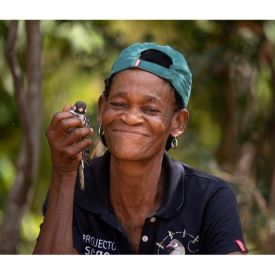
|
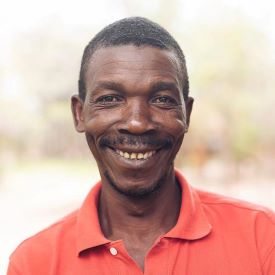
|
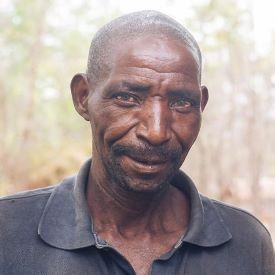
|
|
“When I go honey hunting and I say Phrrr humm! I do it with hope and joy in my heart, because I am certain that everything else will be fine.” ~ Fàtima Balassane |
“The songs we sing with sego, are songs of hope. For we know it is what feeds our families. I am so grateful that I get to work at what I love.” ~ Carvalho Issa Nanguar |
“I love my work, it is in my heart. At a very young age, my father taught me to honey hunt and he said, since I had no schooling, honey hunting would help me win daily bread for my family. I respect that bird (Sego).” ~ Seliano Rucunua |
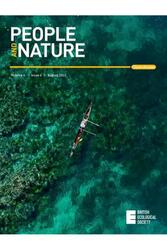
Cram, D.L., van der Wal, J.E.M., Uomini, N.T., Cantor, M., Afan, A.I., Attwood, M.C., Amphaeris, J., Balasani, F., Blair, C.J., Bronstein, J.L., Buanachique, I.O., Cuthill, R.R.T., Das, J., Daura-Jorge, F.G., Deb, A., Dixit, T., Dlamini, G.S., Dounias, E., Gedi, I.I., Gruber, M., Hoffman, L.S., Holzlehner, T., Isack, H.A., Laltaika, E.A., Lloyd-Jones, D.J., Lund, J., Machado, A.M.S., Mahadevan, L., Moreno, I.B., Nwaogu, C.J., Pereira, V.L., Pierotti, R., Rucunua, S.A., dos Santos, W.F., Serpa, N., Smith, B.D., Sridhar, H., Tolkova, I., Tun, T., Valle-Pereira, J.V.S., Wood, B.M., Wrangham, R.W. & Spottiswoode, C.N. 2022 The ecology and evolution of human-wildlife cooperation. People and Nature 4: 841-855.
Brood parasites-host coevolution and other topics involving bird breeding ecology
The Fitz's research on brood parasites-host coevolution and other topics involving bird breeding ecology in the Choma District, Zambia, since 2006, relies on the knowledge and skills of the communities resident on the farms where we work. Our colleagues there enable all our work by every year finding hundreds of birds’ nests on which we carry out our field experiments and sampling, and by using their exceptional field skills to access nests high in trees and in burrows underground.
For more information, see www.AfricanCuckoos.com.
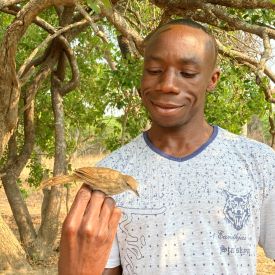
|
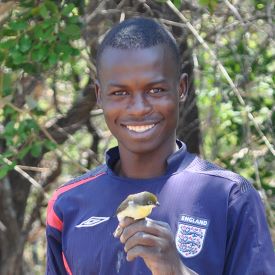
|
|
“I enjoy that each project provides me with opportunities to learn new skills and understand more about the natural world. For example, we worked with Chima (Nwaogu) to research how insect abundance varies across the year and how this relates to the time when birds breed. l learned to use new techniques to sample insects and enjoyed seeing how the grasshoppers we collected had colours that matched those of their habitat.” ~ Silky Hamama |
“Because we do fieldwork in both wet and dry seasons we get to see how birds change their appearance and behaviour during the year. We also see the changes that have happened over many years. For example, cuckoo finches used to commonly use Tawny-flanked Prinias as hosts but we’ve not found a parasitised nest for the past two years. Instead cuckoo finches parasitising Zitting Cisticolas have become more common.” ~ Collins Moya |
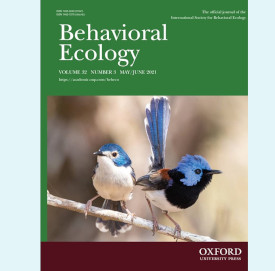
Jamie, G.A., Hamama, S., Moya, C., Kilner, R.M. & Spottiswoode, C.N. 2021 The limits of host colonisation and speciation in a radiation of parasitic finches. Behavioral Ecology 32: 529–538.
Other papers with honey-hunters and Choma field assistants as co-authors:
Cram, D.L., Lloyd-Jones, D.J., van der Wal, J.E.M., Lund, J., Buanachique, I.O., Muamedi, M., Nanguar, C.I., Ngovene, A., Raveh, S., Boner, W., & Spottiswoode, C.N. 2023 Guides and cheats: producer-scrounger dynamics in the honeyguide-human mutualism. Proceedings of the Royal Society of London B 290: 20232024.
Dixit, T., Lund, J., Fulford, A.J.C., Apostol, A.L., Chen, K.-C., Tong, W., Feeney, W.E., Hamusikili, L., Colebrook-Robjent, J.F.R., Town, C.P. & Spottiswoode, C.N. 2023 Chase-away evolution maintains imperfect mimicry despite rapid evolution of mimics. Nature Ecology & Evolution 7: 1978–1982.
Lund, J., Dixit, T., Attwood, M.C., Hamama, S., Moya, C., Stevens, M., Jamie, G.A. & Spottiswoode, C.N. 2023 When perfection isn’t enough: host egg signatures are an effective defence against high-fidelity African cuckoo mimicry. Proceedings of the Royal Society of London B 290: 20231125.
Dixit, T., Choi, G.P.T., al-Mosleh, S., Lund, J., Troscianko, J., Moya, C,., Mahadevan, L.* & Spottiswoode, C.N.* 2023 Combined measures of mimetic fidelity explain imperfect mimicry in a brood parasite-host system. Biology Letters 19: 20220538.
Attwood, M.C., Lund, J., Nwaogu, C.J., Moya, C. & Spottiswoode, C.N. 2023 Aggressive hosts are undeterred by a cuckoo’s hawk-mimicry, but likely make good foster parents. Proceedings of the Royal Society of London B 290: 20221506.
Lloyd-Jones, D.J., St Clair, J.J.H., Cram, D.L., Yassene, O., van der Wal, J.E.M. & Spottiswoode, C.N. 2022 When wax wanes: competitors for beeswax stabilize rather than jeopardize the honeyguide-human mutualism. Proceedings of the Royal Society of London B 289: 20221443.
van der Wal, J.E.M., Spottiswoode, C.N., Uomini, N.T., Cantor, M., Daura-Jorge, F.G., Afan, A.I., Attwood, M.C., Amphaeris, J., Balasani, F., Begg, C.M., Blair, C.J., Bronstein, J.L., Buanachique, I.O., Cuthill, R.R.T., Das, J., Deb, A., Dixit, T., Dlamini, G.S., Dounias, E., Gedi, I.I., Gruber, M., Hoffman, L.S., Holzlehner, T., Isack, H.A., Laltaika, E.A., Lloyd-Jones, D.J., Lund, J., Machado, A.M.S., Mahadevan, L., Moreno, I.B., Nwaogu, C.J., Pierotti, R., Rucunua, S.A., dos Santos, W.F., Serpa, N., Smith, B.D., Tolkova, I., Tun, T., Valle-Pereira, J.V.S., Wood, B.M., Wrangham, R.W. & Cram, D.L. 2022 Safeguarding human-wildlife cooperation. Conservation Letters 15: e12886.
Spottiswoode, C.N., Tong, W., Jamie, G.A., Stryjewski, K.F., DaCosta, J., Kuras, E., Green, A., Hamama, S., Taylor, I.G., Moya, C. & Sorenson, M.D. 2022 Genetic architecture facilitates then constrains adaptation in a host-parasite coevolutionary arms race. Proceedings of the National Academy of Sciences of the USA 119: e2121752119.
McClelland, S.C., Reynolds, M., Cordall, M., Hauber, M.E., Goymann, W., McClean, L.A., Hamama, S., Lund, J., Dixit, T., Louder, M.I.M., Safari, I., Honza, M., Spottiswoode, C.N. & Portugal, S.J. 2021 Embryo movement is more frequent in avian brood parasites than birds with parental reproductive strategies. Proceedings of the Royal Society of London B 288: 20211137.
Caves, E.M., Dixit, T., Colebrook-Robjent, J.F.R., Hamusikili, L., Stevens, M., Thorogood, R. & Spottiswoode, C.N. 2021 Hosts elevate either within-clutch consistency or between-clutch distinctiveness of egg phenotypes in defence against brood parasites. Proceedings of the Royal Society of London B 288: 20210326.
Jamie, G.A., Hamama, S., Moya, C., Kilner, R.M. & Spottiswoode, C.N. 2021 The limits of host colonisation and speciation in a radiation of parasitic finches. Behavioral Ecology 32: 529–538.
Jamie, G.A., Van Belleghem, S., Hogan, B., Hamama, S., Moya, C., Troscianko, J., Stoddard, M.C., Kilner, R.M. & Spottiswoode, C.N. 2020 Multimodal mimicry of hosts in a radiation of parasitic finches. Evolution 74: 2526–2538.
